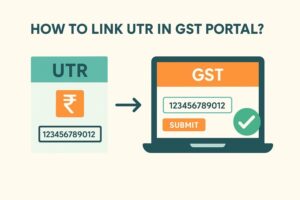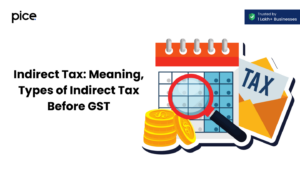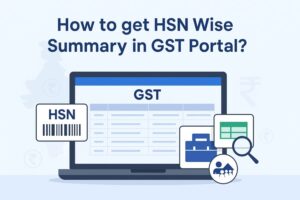GST Interstate vs. GST Intrastate
- 16 Dec 24
- 9 mins
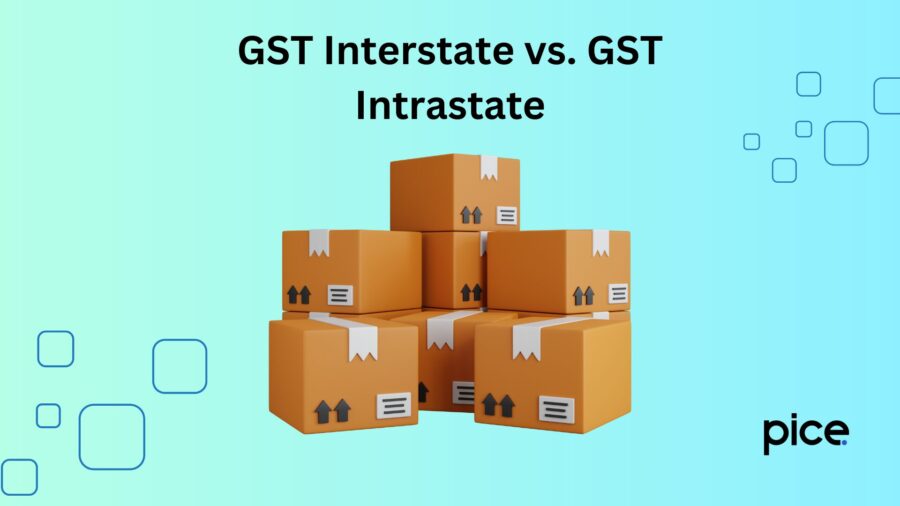
GST Interstate vs. GST Intrastate
Key Takeaways
- Interstate supply involves the movement of goods or services across state/UT borders and attracts IGST, while intrastate supply occurs within the same state/UT and attracts CGST and SGST/UTGST.
- IGST revenue is shared between the central and destination states, whereas CGST goes to the central government and SGST to the state government.
- Businesses engaged in interstate supply must register for GST regardless of turnover, while intrastate supply mandates registration only after crossing the turnover threshold.
- Input Tax Credit (ITC) for IGST can be used to offset IGST, CGST, or SGST liabilities, while CGST and SGST credits can only be used against their respective taxes.
- Supplies to or from Special Economic Zones (SEZs) are always treated as interstate supplies, regardless of location.
The Goods and Services Tax (GST) was implemented in India on July 1st, 2017. The GST regime has two core elements, namely, interstate and intrastate GST, that play a crucial role in identifying the corresponding types of GST- CGST, IGST or SGST.
Whether a transaction is an interstate or an intrastate, one depends upon whether the supplier's location is outside or inside the state and at which place the supply actually takes place.
This blog breaks down the difference between interstate and intra-state supply in GST and other crucial details related to it to avoid any business compliance issues.
What Is Interstate Supply?
Inter-state transactions are domestic supplies wherein goods or services are transferred from one state to another state or from a state to a Union Territory. Additionally, it encompasses imports and exports to interstate trade involving the Special Economic Zone (SEZ) and Export-Oriented Units (EOU). On these, Integrated Goods and Services Taxes are levied by the Central Government so that the tax structure stays the same between states and territories.
Inter-state supplies levy IGST (Integrated Goods and Services Tax) whenever goods or services cross state boundaries. The amount of the tax collected during inter-state transactions, according to a fixed formula, would then be distributed between the destination and central states. That saves business owners from facing multiple indirect taxes, and at the same time provides a reasonable option to the central state government in sharing tax revenues with the state governments.
What Is Intrastatе Supply?
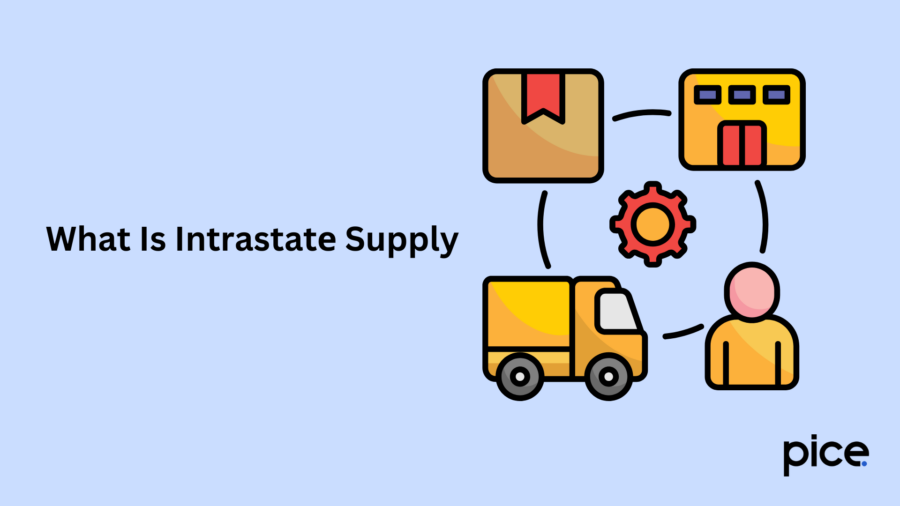
The intra-statе supply refers to transactions where both the supplier and the place of supply are within the same state. In the cases of intra-state supply, CGST (Central Goods and Services Tax) and SGST (State Goods and Services Tax) or UTGST (Union Territory Goods and Services Tax) are charged, with the central and state or union territory governments imposing the respective taxes.
Implementation of CGST and SGST reconciled the previous varying central taxes and state-level VAT (Value Added Tax), thus lowering the complex structure of tax and compliance burden. The rate of GST for intra-state supply varies based on the type of goods or services. Vendors are responsible for collecting both CGST and SGST/UTGST from customers for vendor payments.
💡 If you want to pay your GST with Credit Card, then download Pice Business Payment App. Pice is the one stop app for all paying all your business expenses.
Difference Between GST Interstate & GST Intrastate
The following table provides the key difference between GST interstate and GST intrastate:
| Parameters | GST Interstate | GST Intrastate |
| Tax Applicability | The inter-state GST supply applies to the transaction of goods or services across different states or Union Territories | GST intrastate supply applies to the transaction of goods or services within the same state or Union Territories |
| GST Registration | Businesses must register for GST regardless of their turnover. | GST registration is required only if a business exceeds the specified turnover limit and is specific to the state of operation. |
| GSTIN | It is allotted for interstate operations | It is fixed in the state where you operate your business. |
| Tax Liability | The recipient is responsible for paying IGST. | The recipient must pay both SGST and CGST. |
| Place of Supply Rules | Special rules apply for the correct determination of the place of supply for interstate transactions. | Separate rules exist for accurate determination of the place of supply within the same state. |
| Input Tax Credit | The IGST paid on inputs can be utilised to reduce liabilities for IGST, CGST, or SGST | Businesses can claim input tax credits for CGST against CGST and for SGST against SGST |
Interstate and Intrastate GST Rates With Examples
GST interstate and intrastate supply in India vary based on the type of goods or services provided. The applicable rates are categorised into four GST slabs: 5%, 12%, 18% and 28%. In addition to this, there are some high-value products that have a specific GST rate applicable and some basic products that are in the nil rate category. Let us proceed with examples of how GST is calculated for transactions both interstate as well as intrastate transactions.
Interstate GST Rate Example
Suppose XYZ Pvt. Ltd. in Bengaluru, Karnataka, sold a laptop worth ₹1,50,000 to someone in Chennai, Tamil Nadu. This is an interstate supply as the supply is crossing the border of the state. Slab-wise applicable GST rate for a laptop is 18%. In this case, IGST is being levied by the Central Government, which is being passed on to the destination state.
IGST Calculation: 1,50,000 X 18% = ₹27,000
The dealer will add IGST (Integrated GST) of ₹27,000, which the Centre receives, divided according to a fixed ratio between the Centre and the state in which it is received, that is Tamil Nadu in this case.
As an exception, if the supply is made from Bengaluru, Karnataka to a unit located within Special Economic Zones Karnataka would still be construed as an interstate supply. Invariably, all supplies made to or from Special Economic Zones units are treated as interstate supplies.
Intrastate GST Rate Example
Suppose ABC Private Limited, based in Ahmedabad, Gujarat, supplies televisions worth ₹2,50,000 to a buyer located in Rajkot, Gujarat. The applicable current rate of GST return is 18%, which is split between 9% CGST and 9% SGST.
CGST/SGST Calculation: ₹2,50,000 x 18% = ₹45,000
₹22,500 is collected as CGST as well as SGST in the present case.
The total amount collected by the dealer is ₹45,000. The CGST would go to the Central Government and the SGST would be paid to the Gujarat Government ₹22,500 each.
The levy of both intra-state GST rates are by the Central and State Governments. The combined rate of both CGST and SGST is, however, equal to the rate of IGST. In essence, the overall tax burden in an interstate supply will be no different from the overall burden in an intrastate supply. It is just that the tax is being applied differently in one case in relation to the other.
Conclusion
The difference between interstate and intrastate supply in GST lies in how taxes are applied based on the supply location of the seller and buyer. While the overall applicable tax rate remains the same, the basic difference lies with IGST revenue shared between the centre and states, and CGST/SGST split between the central and state governments. Understanding these critical distinctions helps in managing tax liabilities and maintaining the aspects of business compliance requirements more efficiently.
FAQs
What is IGST with an example?
How is interstate GST calculated?
IGST = ₹2,00,000 x 18% = ₹36,000.
This tax is collected by the central government and shared with the destination state.
Can IGST be paid through SGST?
IGST credit must first be used to pay IGST liability.
Remaining IGST credit can be used for CGST and SGST liabilities.
However, SGST credit can only be used to pay SGST and not IGST.
What are the examples of types of GST?
IGST (Integrated GST): Applied on interstate supplies and exports/imports.
CGST (Central GST): Applied within a state and collected by the central government.
SGST (State GST): Applied within a state and collected by the state government.
UTGST (Union Territory GST): Applied in Union Territories in place of SGST.
For example, IGST applies when goods move from Delhi to Gujarat, while CGST and SGST apply to transactions within Delhi.
 By
By 










